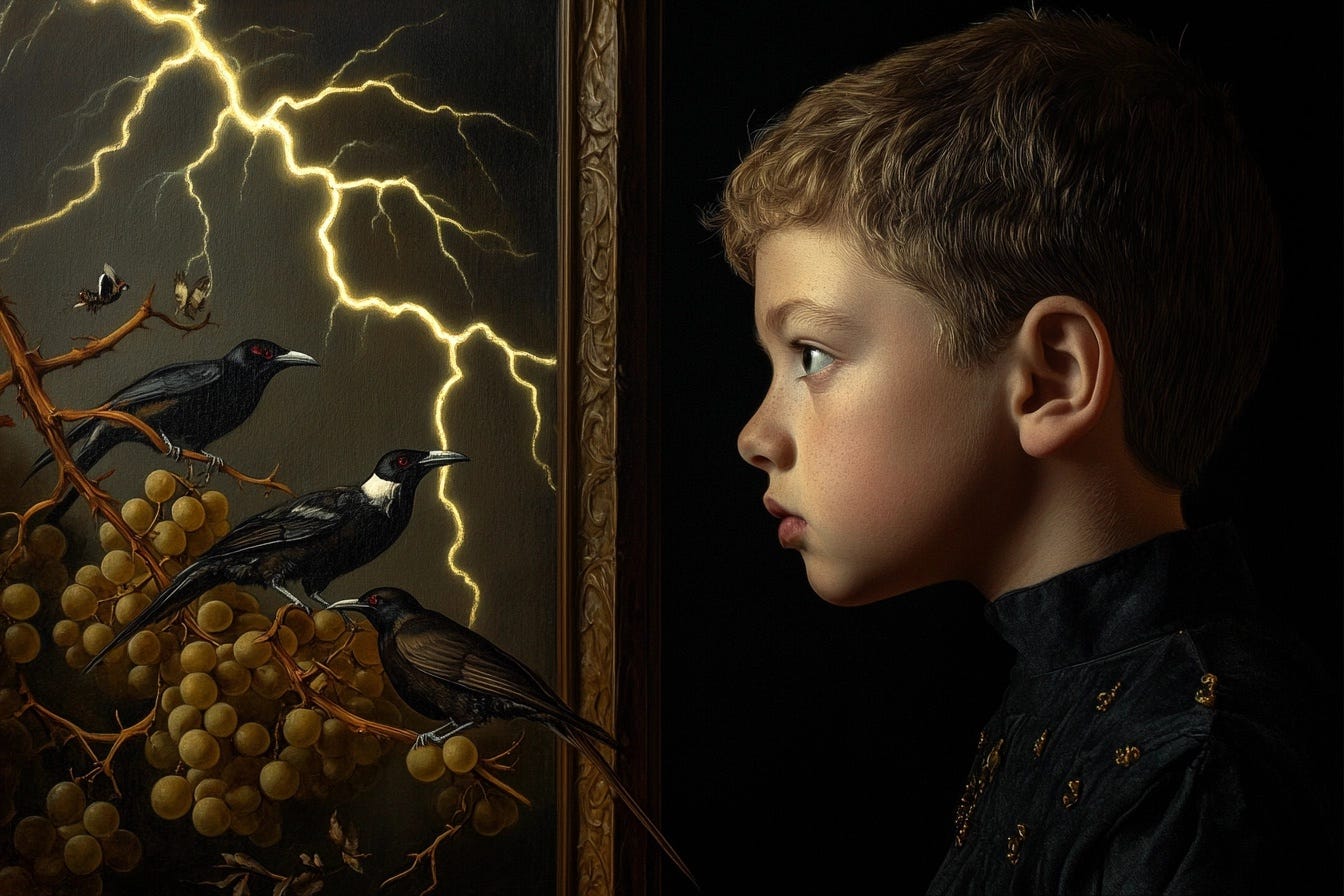“Of making many books there is no end; and much study is a weariness of the flesh.”
—Ecclesiastes 12:12
Graham Burnett’s dispatch from the AI-humanities frontier at Princeton doesn’t flinch. He sees the moment for what it is: a widening gyre of possibility in which the bottleneck to creative production is not knowledge but attention.
I. From Production to Attention
Midway through his essay, Burnett writes:
“The question is no longer whether we can write such books; they can be written endlessly, for us. The question is, do we want to read them?”
This is the fault line. AI collapses the time and cost of high-quality writing. The 10-year monograph becomes a weekend prompt. The archive comes alive.
In economic terms, we’ve moved from a scarcity of supply to a scarcity of demand.
Which means: curation, selection, interpretation—these become the scarce skills. Not what to write. But what to read, how to read, and why. And perhaps most importantly, what not to read.
The Long Tail and the Curatorial Crisis
The Metropolitan Museum of Art, the Smithsonian Institution, and the British Museum collectively house over 13 million works of art. At any given time, less than 5% of those are on display. The rest remain in storage—significant enough to be preserved, insignificant enough to be visible.
Culture has always exceeded attention.
But now the problem scales. AI doesn’t just unlock the archive, it generates new archives. Monographs on obscure painters. Dialogues with virtual Euripides. Treatises on niche subfields of 17th-century flower taxonomy. All well-written. All accessible. All endless. Borges’s infinite library—the Library of Babel—made real.
This is the “long tail” phenomenon, familiar from platforms like Amazon or Netflix: instead of selling one book one million times, long tail companies sell 1 million books one time each.
Chris Anderson, in his 2006 book The Long Tail, showed how iche products could find niche audiences. You didn’t need a bestseller. You just needed infrastructure to surface the obscure. In a world of infinite content, being an author matters less than being a librarian.
The Order of the Third Bird: Against Reflex, Toward Ritual Attention
Burnett is not just a historian of attention. He is a practitioner. As a seminal figure in the “Order of the Third Bird,” a quasi-secret society of aesthetic paramedics, he has spent decades staging rituals of radical contemplation, often in the sterile halls of modern museums
The Order takes its name from an apocryphal tale involving the painter Zeuxis. As the story goes, Zeuxis completed a painting of a boy carrying grapes, then left it outside and hid in the bushes to see how birds would react. Three birds approached. The first pecked at the grapes, fooled by the realism. The second saw the boy, became frightened, and flew away. Zeuxis, thrilled, believed he had achieved perfect illusion.
But the third bird did something different. It stopped. It assumed a pose of contemplation; not deceived, not repelled, but absorbed in the act of looking.
The Order named itself after this third bird.
The Third Bird does not consume. It does not critique. It does not scroll. It stays.
And in staying, it models the only remaining scarcity: the capacity to attend without agenda, what in the Jewish tradition we’d call “Torah lishma”: attention for its own sake.
This is not a reactionary call for slowness. It is a blueprint for how we might curate meaning in an age of infinite, good-enough content. It is a politics of attention.
And the humanities, if they are to survive, must become third-bird-like: not in flight or consumption, but in stillness, poise, and presence.
What Is the Role of the University Now?
If generative AI automates the writing of scholarly texts, what becomes of the research university?
The 19th-century model, influenced by figures like Leopold von Ranke, prized scholarly production—wie es eigentlich gewesen, the scientific study of “what actually happened.” Professors were trained as researchers first, teachers second. Promotion and prestige flowed through publication.
But if publication is now infinite, what then?
Do we rate scholars by how many books they can generate with GPT? Do we shift from “publish or perish” to “prompt or perish”?
There are three alternatives:
Coaching become primary. The professor as coach or motivator, not expert.
Taste becomes the differentiator. Who can sift the infinite archive and say, “Read this”?
Presence reasserts itself. Who can model a way of being that no machine can simulate?
The professor becomes less a content creator than a context creator. A maker of meaningful attention.
A New Humanities: After the Flood
Burnett ends with a moment of existential clarity. His student says about Chat GPT: “I don’t think anyone has ever paid such pure attention to me and my thinking and my questions . . . ever.”
The machine listened. Patiently.
Without ego. Without distraction.
That’s what we’re competing with.
Now that anything can be written, the question becomes: what ought to be read?
And who do you trust to tell you?




